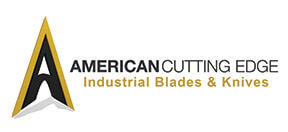Brad Miller
-
As an industrial manufacturer, you have a lot of steps in your production process. You might not give much thought to the impact replacement knives, blades, wear parts, and hardware have on your operation. The reality is that balancing the amount of these components to keep on-hand for your cutting operation is a significant challenge. Regardless of the industry, having the right amount of replacement part inventory on-hand can have a significant impact on the business. Working with the right supplier not only helps organizations manage the financial aspects of extra knives, blades, and parts but also helps keep production running in the event of a major knife failure.
Let's start with the definition of a warehouse agreement. Also known as inventory management programs, these agreements come in different forms, which we will cover later in this blog. The
-
Understanding the many supply chain options available for procuring industrial knives allows businesses to recognize suppliers that are eager and able to provide the best option for their cutting application.
The blade material, tolerances, size, and volume all play a role in determining the most efficient and effective supply chain. Industrial knife suppliers that investigate the needs of their customers and take the time to understand how the knife will be used, inventory demands, and budgetary constraints can leverage this information, their long-standing relationships, and experience to create a supply chain that best meets the needs of the customer.
For industrial cutting applications, optimal sourcing can be just as critical
-
Many industrial knife customers prefer to order blades that are made in the United States. For most, this distinction connotes quality and provides a sense of patriotism in that American jobs are supported by the order. But, where are your American made knives really from?
However, understanding the origin of your blades is not as simple as a Made in America stamp. True understanding requires taking a deeper dive into each step of the procurement and manufacturing process.
5 Questions to Ask About the Origin of Your Industrial Knives
1. What is the country of origin for your tool steel?
Tool and High-Speed steels are the raw material used to manufacture many industrial blades. Most of this is
-
When Was the Last Time You Spoke to Your Supplier?
When was the last time you spoke to your industrial knife supplier or sent out an email to ask a quick question about knife performance? If you can’t remember, it has been too long. If you can remember and the response you received was a recorded line or a generic “check out our website” email…you have the wrong supplier.
True industrial knife experts LOVE talking to customers. They want to know what is happening in every aspect of your cutting operation. Why? Because industrial knife manufacturers are always in search of ways to fill the industry with better solutions, and the only way to do that is to understand how industrial knives are being used.
Think about the last time you visited a local shop and got into a conversation with the owner. Chances are pretty good that the conversation lasted a lot longer than you thought it would and that you learned a lot. His or her passion for the business came through
-
Whether you're in plastics recycling, packaging, food processing or other industries that require industrial knives
Knife manufacturers have the experience and knowledge to evaluate your cutting application

